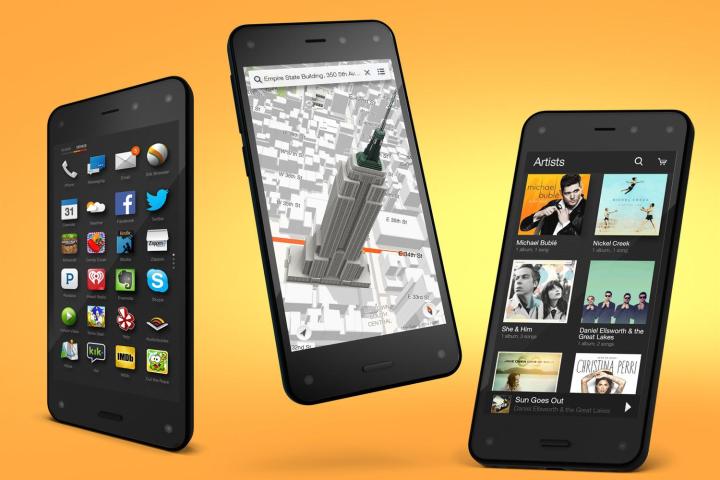
Amazon has long been known as a company that focuses first and foremost on customers, while largely ignoring competitors. It invents, it does the hard things well, and it extends its digital arms deep and conveniently into your wallet, over and over again. Anything you want to buy is just a click away at the Everything Store.
For evidence, just look at the original Kindle. Way back in the early days of the Kindle, back when it was still pretty much a single-purpose device for reading e-books, Amazon founder Jeff Bezos was dismissive of Apple’s more full-featured color iPad in one of his many interviews with broadcaster Charlie Rose.
In protest to Rose pressing him about how the Kindle stacked up against the competition, he said “When people come to me and they say, ‘Jeff, you’ve got to have full-motion video, color on the Kindle,’ I say, ‘Why? You think Hemingway’s going to pop more in color?’”
The Amazon of today is different. It’s been caught blocking book sales to customers as a result of rocky book-vendor negotiations, launched an excessively limited streaming music service, and now, its Amazon phone has a hefty $650 price. A realignment appears to be under way at the company Bezos build.
The Everything Store is increasingly acting instead like it would rather be the Everywhere Store.
The Seattle-based giant seems more concerned with getting itself in front of customers at each and every conceivable opportunity – being everywhere – more than assembling and keeping a comprehensive product inventory and having the best prices.
The Everything Store is increasingly acting instead like it would rather be the Everywhere Store.
How else do we explain the me-too Fire Phone Amazon is set to drop on the public in a few months’ time? As the New York Times’ Farhad Manjoo puts it, Bezos went the un-Amazon route of making this a high-end phone for a normal price, and that “it’s hard to see what this phone offers over the iPhone, the Samsung Galaxy or any other top-of-the-line smartphones on the market today.”
Customers, in other words, already can buy Amazon goods from their iPhones. Is a 3D camera that takes exceptional photos enough to unhook them from iWorld? And compared to standard Android phones, Amazon’s device lacks a lot of top apps, since it will not connect to Google’s Play Store. That means no Google Maps, for one, and a lot of other holes.
What about Prime Music, Amazon’s new streaming service available to Prime members that makes more than 1 million songs available to stream? That number, of course, is dwarfed by the libraries available from rivals like Spotify, with its 20 million streaming tracks.
Perhaps the rationale for releasing comparatively weaker products is this: incremental omniscience. The Motley Fool describes it this way – every new product or service Amazon releases doesn’t have to trounce what’s already out there. Not when your goal, rather, is to simply up the odds of a transaction being completed by being everywhere your customers are.
Amazon vice president of digital music Steve Boom told VentureBeat in a recent interview that the company’s goal with the new music service is simple. Amazon wants to grow its base of Prime members, full stop.
The company’s now well-known flap with Hachette that’s resulted in Amazon delaying shipments of Hachette books also can be viewed through this prism. Perhaps the notoriously penny-pinching retailer would draw less of a hard line if its prime directive is selling everything.
Here’s Stephen Colbert discussing how the Hachette situation affects him.
These days, it’s more important for Amazon to sell things everywhere. The cost of Prime membership has risen, and free shipping is now for orders of at least $35, not $25 anymore. Tax-free shopping also is disappearing – all things that could seem worrisome for the company if it cared only about selling everything anymore.
A report from a few months ago hints Amazon may be marking up its goods and services more and more each year, suggesting that it thinks its customers crave convenience more than rock-bottom prices.
Amazon may be marking up its goods and services more and more each year.
Until now, Amazon’s wares – books, toys and the like – have tended to be regarded as less costly versions of their brick-and-mortar counterparts, making Amazon something akin to a Walmart of the Web. However, a report from the Motley Fool financial website notes that Amazon’s financial statements show the difference between what Amazon pays for something and what it then sells that item to customers for is rising.
From 2006 to 2011, the company’s gross margin was around 22 percent, rising to almost 25 percent in 2012 then slightly more than 27 percent in 2013.
Low price, in retrospect, was probably never destined to be the company’s secret weapon for all time. A recent Harvard Business Review article, for example, noted that “though price is a valuable differentiator in the marketplace, it won’t promise loyalty because a mere fan will only be as loyal as your cheapest competitor.”
No surprise, then, that Bezos has recently teased innovations like product delivery by drone as well as predictive product delivery– all in an effort to remind customers Amazon wants you to keep buying – and it will try to meet you everywhere to make that possible. It just probably won’t be the cheapest option anymore.
Editors' Recommendations
- Amazon Fire HD 10 and Fire Max 11 prices slashed… for now
- An Android phone you haven’t heard of just won the charging game
- Amazon’s Big Spring Sale: Save on Galaxy S24, Fold 5 and more
- All of Amazon’s Fire Kids tablets are heavily discounted today
- Best Amazon Fire tablet deals: Save on Fire HD 8, Fire Max 11 and more


